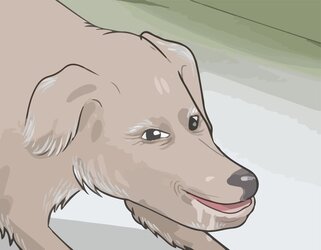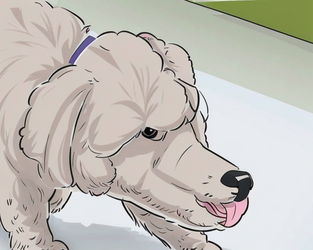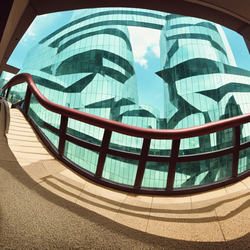- Joined
- Aug 28, 2018
If you just want "more detail", you can go to the "Extras" tab in A1111 and just throw the image into an upscaler. Img->img and ControlNet let you generate similar images to a base image without being identical.How the fuck do you use it to take something, like let's say my avatar, put it through img2img and make it enhance the detail of it without changing the shape of it?
Method 1: img->img
Here's an example slobbermutt I made while playing with img->img, using the standard slobbermutt as the image input.


You can see the full parameters if you drop it into the PNG info tab in A1111, but I'll highlight the important parts.
Basically what I wanted it to look like. Note the WikiHow LoRA, since i wanted to copy the WikiHow art style.Prompt: a light brown dog is walking on the ground with a white background and a green background with a white border and a black border, a detailed drawing, furry art, (poodle:1.5), puffy hair, close-up, <lora:WikiHow:0.85>, slobbering, drooling, open mouth
Some random negative prompt I copied off CivitAI, some of it was probably useless, like the "bad hands" embedding.Negative prompt: bad-hands-5, bad-image-v2-39000, EasyNegative, text, watermark, low quality, medium quality, blurry, censored, wrinkles, deformed, mutated text, watermark, low quality, medium quality, blurry, censored, wrinkles, deformed, mutated, glasses, asian
Typically 25+ steps is fine. I like SDE Karras. The two most important "knobs" are the CFG scale and the denoising strength. The higher the CFG scale, the more strictly it will try to match the image to the prompt. The denoising strength determines how much it changes the input image. A low denoising strength will give you a very similar image, a high denoising strength will give you a completely different image. Typically you want to experiment and find a sweet spot where it changes the image enough to be interesting, but without making something different.Steps: 35, Sampler: DPM++ 3M SDE Karras, CFG scale: 6, Seed: 2949670874, Size: 640x512, Model hash: 463d6a9fe8, Denoising strength: 0.5, Clip skip: 2, Lora hashes: "WikiHow: 2ca810e36c44", Version: v1.6.0, Hashes: {"embed:EasyNegative": "c74b4e810b", "embed:bad-hands-5": "aa7651be15", "embed:bad-image-v2-39000": "5b9281d7c6"}
Method 2: Controlnet
I suck at this honestly when it comes to generating people, animals and such. I'd just go look for a YouTube tutorial or something.
Here's the model that seems to work the best. https://civitai.com/models/111006/qr-code-monsterAnd speaking of ControlNet, how do you set it up to do the funny hidden message images? This is another one of those things that I have zero idea about while I still keep bumblefucking with prompts and generation parameters over a single thing over and over again waiting a minute per image only to realize it's not doing shit to make it look better just as I did back when Stable Diffusion first became big.
You can make a base image in paint, find one online, or preprocess it with one of the ControlNet preprocessors. For this one I just found a black and white trollface image online and used that. Black text on a white background in paint works great as well.
Here's the controlnet info:
The main thing to adjust here is the control weight. Set it higher to make your output look more like the input.city scenery, sidewalk, railing, office building
Negative prompt: lowres, watermark
Steps: 45, Sampler: DPM++ 3M SDE Karras, CFG scale: 6, Seed: 3339385279, Size: 1024x1024, Model hash: 7f6146b8a9, Clip skip: 2, ControlNet 0: "Module: none, Model: qrCodeMonster_v20 [5e5778cb], Weight: 0.9, Resize Mode: Crop and Resize, Low Vram: False, Guidance Start: 0, Guidance End: 1, Pixel Perfect: True, Control Mode: Balanced", Version: v1.6.0, Hashes: {"model": "7f6146b8a9"}

































